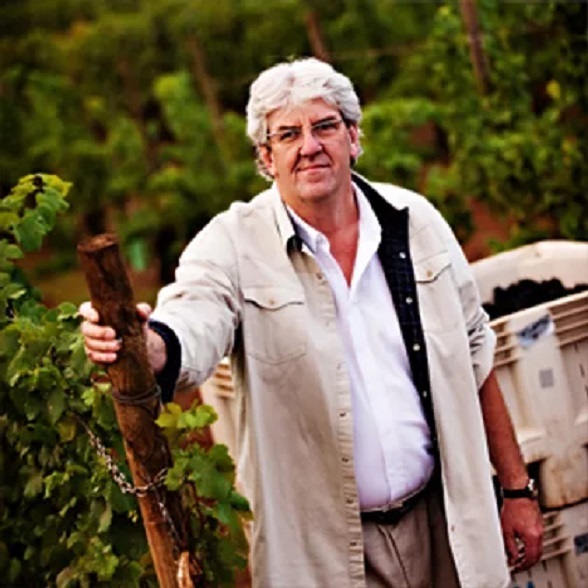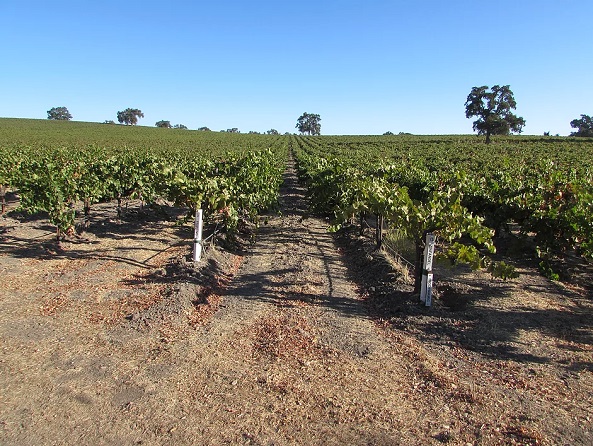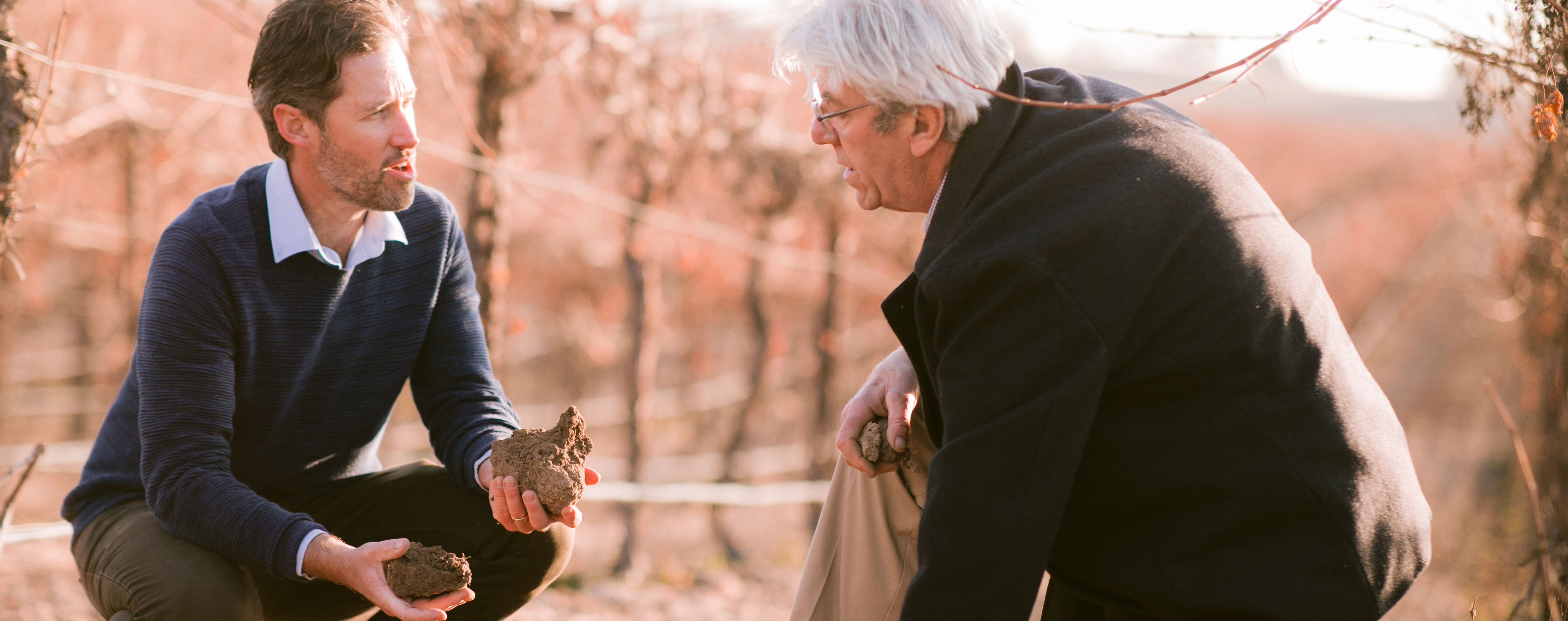I’m talking with Philippe Armenier, a French viticulturist who has helped 45 wine producers on the west coast of the United States to convert more than 5,000 acres to biodynamic farming.
His latest client is Robert Hall Winery in Paso Robles. After my Zoom chat with Philippe, he was heading to Robert Hall’s vineyards to oversee the first spraying of horn manure (500 prep) on 40 of the estate’s 136 acres.
“When you start to spray the biodynamic preparations, you enter into a new way of farming,” Philippe says.
The 500 prep is the crucial first step in the conversion process, he explains. “It will take some time, but it’s the beginning.”
The aim of biodynamics’ nine specially made herbal and mineral preparations is to “enliven the compost which, when sprayed, will enliven the soil,” Philippe states.
He has been clear about the benefits of biodynamic methods since converting his family’s vineyards in Châteauneuf-du-Pape more than 30 years ago. He started with 20 of the 52 acres at Domaine de Marcoux but, after seeing the early positive changes, quickly converted the rest.
“The first results were showing so much change and improvement in the way the plant was looking and the quality of the grapes and the wine,” Philippe recalls.

Philippe (above) always wanted to work in California, but first went to Australia to improve his English and learn more about biodynamic farming in dry conditions.
Philippe, who runs Biodynamic Terroirs, eventually settled in California in 2001 and has been helping vineyard owners in California, Oregon, Washington and British Columbia to convert to biodynamics ever since.
“Biodynamic farming is about quality, it’s not about quantity – we don’t need a lot to change something, but it has to be prepared in the right way,” is how he explains the big impact on soil life, vine roots, plant growth and grape quality from tiny proportions of preparations: typically only 2g of preps 502 to 506 and 5ml of the Valerian preparation (507) are used per 5-7kg of horn manure.
“It’s nothing,” Philippe admits. “It’s like spreading a tablespoon of silica over an acre.”
He adds: “This is why the dynamization process is so important.”
Dynamizing the biodynamic preparations involves the rhythmic stirring of a tiny amount of a preparation in a bucket or barrel of rainwater for an hour. The vortex created by the stirring exposes the water to air – and the forces of the cosmos.
“The water after one hour of dynamization has completely changed,” Philippe says. “The information contained in the silica preparation 501 is imprinted onto the water layers through dynamization and it is this information which is communicated to the vineyard. The same process is used for the horn manure preparation 500.”
The goal of the preps, dynamization and revitalising the soil is to produce “well-balanced plants”.
For a biodynamic farming consultant who’s been working in California for 20 years, Philippe is surprisingly reluctant to offer advice when I ask about the best way for Canopy readers to embark on this journey.
“I’m not going to push and force someone and tell him that is what you should do,” he says. “The man will change by himself – it’s a personal journey… People come to biodynamic farming when they are ready. I’m not forcing them, I can just introduce myself: this is what I’m doing. But a lot of doors are closed. I’m working with some people that I met 24 years before and they were not ready to start biodynamic farming but one day they came to me and said, ‘Now, Philippe, I want to do it’. You cannot force anyone.”
'There must be room for everyone'But can you persuade them, I wonder?
“Absolutely not. The world is big enough for everyone, so we have a conventional farmer, we have an organic farmer, we have a biodynamic farmer, and that is fine. I don’t think we will get rid of the conventional, it will always be here. And that may be bad for the planet and the food they are producing, but there must be room for everyone.”
When I ask about the key differences between conventional, organic and biodynamic farming, he is more forthcoming. He dismisses conventional farming as the “wrong nutrients in the wrong way” and says organic farming “doesn’t care about the soil, it cares about the canopy, the plant above (the soil) and it tries to feed the plant above, on the canopy. It’s not a good way to feed the plant”.
He continues: “Only biodynamic farming with the preps and its understanding of the earth and the cosmos feeds the plant in the right way.”

To explain this he gets me to think of the plant as a human being – how we use our head for seeing, smelling, hearing, eating and thinking – “everything is coming from outside in”; how we use our digestive system without thinking; and how our head and stomach are linked by liquids and oxygen.
“When you look at a plant as a biodynamist, you see a man upside down – with his head in the soil… Even if 95% of the food is coming from above, it has to go into the soil and back up into the plant, so the nutrients and all the energy from above has to go into the soil and be absorbed by the root system.”
Continuing the analogy, he equates the vine’s sap with blood flowing in a human and he likens organic farming to trying to get “food directly from your legs and arms or stomach” without going through your mouth.
This is why the focus for biodynamic farmers is on the quality of the soil and making it a “living force”.
“Some of the preps like horn manure really develop a strong root system and help the roots to go deeper, wider and explore more nutrients,” he tells me.
As a result, he says, with biodynamic farming “you get more terroir, more minerality and more expression of the place”.
'You get more terroir, more minerality and more expression of the place'“Biodynamic farming will not change an 80-point wine into a 100-point wine, but it will express the place in a very nice way and express what the place has to say.”
At Robert Hall Winery, which was founded in 1999 by the late entrepreneur Robert Hall but is now owned by O’Neill Vintners & Distillers, they are conducting a comparative trial at their three estate vineyards in the Geneseo and Estrella Districts, and sharing the results with the wider wine community through monthly ‘field days’. The trial is being led by Robert Hall Winery’s managing director Caine Thompson and VP of viticulture and winemaking Marty Spate, with Philippe as biodynamic consultant.
“This is one of the most transparent studies that I’m aware of anywhere in the world,” Philippe says.
Caine says: “It will showcase regenerative farming practices in a real-life case study that brings the whole community together on a journey.”
The three-year study will compare “all aspects of growing under regenerative viticulture versus sustainable winegrowing techniques”.
It will track and measure:
- Organic soil carbon levels
- Soil microbiology
- Pesticide residues
- Organic matter
- Fauna/flora differences
- Yield
- Brix, pH, TA
- Pests and diseases (botrytis, powdery mildew, mealybug).
- Sensory analysis (weight, structure, aromatic profile)
- Tracking colour and tannin indexes throughout fermentation to evaluate extraction
- Phenolic panel on grape and wine samples
Owner and CEO Jeff O’Neill adds: “While biodynamic and organic farming are age-old practices, we want to examine the effectiveness of carbon sequestration through regenerative farming practices, along with quality and cost determinations.”
As the winery calls its conversion “regenerative farming with organic and biodynamic farming techniques”, I ask Philippe to explain regenerative farming.
It is part of biodynamic farming, he says, but biodynamic farming is more holistic.
“Only biodynamic farming is regenerative agriculture. Regenerative agriculture is a kind of agri-forestry permaculture way of farming which is only about matter and building up the soil. It is not connected to the cosmos, has no relation with above (the soil), it’s only dealing with the earth, with matter. So, it’s a kind of limited way of farming.”
'Sustainable is a beautiful word but...'Philippe is also dismissive of another word that’s in vogue at wine estates – sustainable.
“Sustainable is a beautiful word but it doesn’t mean anything anymore,” he says, “because you have some sustainable wineries or farms, they say they will do everything they can to stay kind of green and respectful of the environment but if they see any risk of pest it gives them the right to spray a chemical.”
Another trendy term in winemaking is ‘vegan’. My understanding is that biodynamic wines can’t be considered vegan-friendly because they use animal products, such as cow horns, bladders and skulls in the making of the preparations. Philippe points out that Maria Thun has created a range of preps made from plants and trees before going on to explain his view of animal products in biodynamic farming.
“There are millions of cows killed every year to feed man. From one cow horn we could treat maybe 10 acres and the horn can be reused for many years,” he says.
He adds: “We need only a little of the animal to do our way of farming. And animals are part of the whole kingdom. We have four kingdoms – mineral kingdom (the earth), the vegetable kingdom (the plant above the soil), animal kingdom and the human being. As biodynamics, we work with all four. We are not excluding one of them. We have animals in the field at certain times of the year when we do biodynamic farming – but by spraying the preps we have the animal kingdom in the field all the time, so it’s not a monoculture, it’s not any more just a plant – we are touching the whole of nature.”
'I was quite bored with what I saw'Asked about his initial reason for looking at biodynamics while farming ‘conventionally’ at the family’s Domaine de Marcoux, he replies: “I was quite bored with what I saw in my vineyard. The quality of Marcoux was already great but I was reaching a kind of thought and I asked the supplier what can we do to invigorate the vineyards, to create more vitality, so I feel more happy when I go inside? They said buy more products.”
But that was not what he wanted to do so he started looking into organic farming. However, he was not impressed with the organic vineyards he saw in the south of France. “The vines were not looking great and the wines were not good, so I didn’t want to go that way,” he says. “And one day I discovered the book Agriculture Course: The Birth Of The Biodynamic Method by Rudolf Steiner. I read it. I said, ‘this is what I want to do’. And I contacted François Boucher (the pioneer of biodynamy in France). He had just started his own consulting business and we agreed to work together.”
It was 1989 when Domaine de Marcoux became the first vineyard in Châteauneuf-du-Pape to convert to biodynamics. Philippe noticed an immediate impact on the vines and soil with “small results coming every year”.
He was so impressed with Rudolf Steiner’s philosophy that he sent his children to Waldorf schools which follow the educational philosophy of Steiner.
And now Philippe is spreading the philosophy to the world of coffee, consulting for a coffee grower in Panama. Philippe says it’s been fascinating learning about the opposite of grapes, as Finca Deborah coffee is grown in wet conditions on a steep slope with the focus on the seed, whereas Californian grapes are grown in dry conditions with the focus on the juice. “It’s only by looking at the opposite that you understand what you are doing. If you stick with what you are doing, you are missing something.”
‘If you stick with what you are doing you are missing something’













.png)






